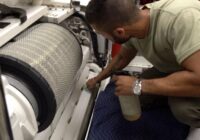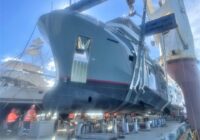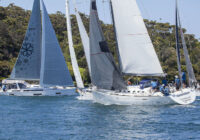As the mercury drops, winter sets in, and recreational fishers embrace the cold by heading inland and dropping lines in southern New South Wales, marine authorities have issued a reminder about the heightened risks of cold-water boating.
NSW Maritime Senior Boating Safety Officer Rory O’Hara said that additional roving Boating Safety Officers were deployed to the region over the long weekend for Operation Winter Bites, as low water levels create challenging boating conditions due to exposed hazards and shallow areas.
“We see hundreds of fishers lured to alpine waterways during the colder months, but a concerning number of boaters are not aware of the additional requirements and hidden dangers of this type of boating,” Mr O’Hara said.
“During the long weekend operation, Boating Safety Officers conducted more than 175 vessel checks across waterways across southern NSW with a particular focus on the alps, resulting in 34 official cautions and 10 penalty notices issued.
“The most common offences we came across were related to lifejackets, accounting for 57 per cent of formal actions recorded, followed by safety equipment offences which made up 14 per cent of offences and licensing and registration at 11 per cent.
“Wearing an appropriate lifejacket is mandatory for all boaters in vessels under 4.8m in length on alpine waterways. Any water temperature below 15 degrees can induce cold shock and hypothermia if you fall in, drastically increasing the risk of drowning.
“The weight of wet winter woollies can make it impossible to stay afloat, so it’s important to always make that top layer a lifejacket – and remember an inflatable lifejacket won’t work properly if worn under your clothes.”
In the last 12 months, more than half the fines issued on south inland waterways were for lifejacket offences. This included people not wearing a lifejacket, not having an adequately serviced lifejacket and not carrying a lifejacket.
With the days getting shorter, Mr O’Hara said boaters need to ensure they display appropriate navigational lights on their vessel after sunset, before sunrise and during times of low visibility such as fog.
“Sonar technology which makes it possible to see where fish are underwater in the dark has made it increasingly popular for boaters to be out fishing late into the night and very early in the morning, but those who fail to display the right lights could end up on the hook.”
“You might not want the fish to see you coming, but other boaters need to be able to see you, and it’s your responsibility to ensure you’re visible to them.
“Don’t be the person out there with all the gear but no idea. There’s plenty of fun to be had and fish to catch – but remember to do your research, check the weather, know the rules around lifejackets and safety equipment for the waterway you’re on and make sure you are up to date with servicing and maintenance.”
For more information and resources about safe boating on alpine waterways, visit https://www.nsw.gov.au/driving-boating-and-transport/using-waterways-boating-and-transport-information/waterways-and-designated-areas/alpine-waters.











